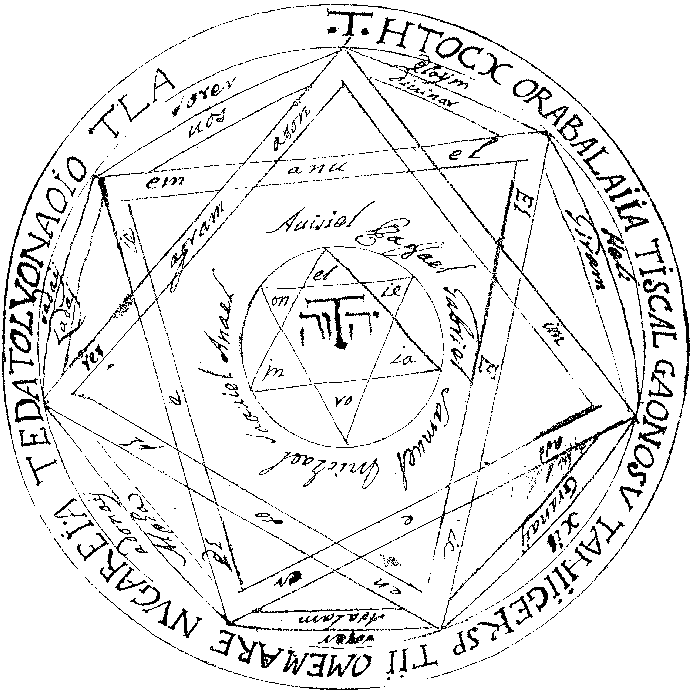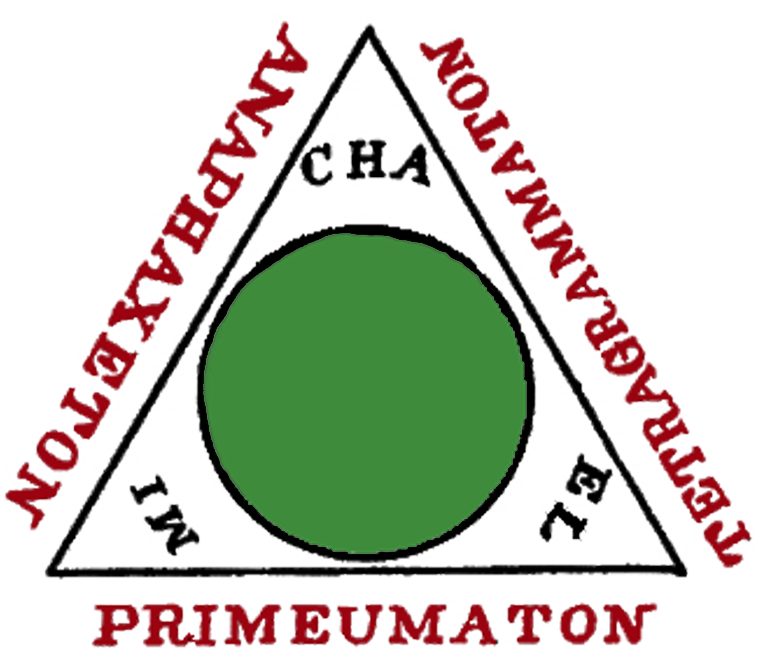Key of Solomon
The Key of Solomon (Latin: Clavicula Salomonis; Hebrew: מפתח שלמה [Mafteah Shelomoh]) is a pseudepigraphical grimoire (also known as a book of spells) attributed to King Solomon. It probably dates back to the 14th or 15th century Italian Renaissance. It presents a typical example of Renaissance magic.
It is possible that the Key of Solomon inspired later works, particularly the 17th-century grimoire also known as Clavicula Salomonis Regis, The Lesser Key of Solomon or Lemegeton, although there are many differences between the books.
Textual history
Many such grimoires attributed to King Solomon were written during the Renaissance, ultimately being influenced by earlier works of Jewish kabbalists and Arab magicians. These, in turn, incorporated aspects of the Greco-Roman magic of Late Antiquity.
Several versions of the Key of Solomon exist, in various translations, with minor to significant differences. The original type of text was probably a Latin or Italian text dating to the 14th or 15th century. Most surviving manuscripts date from the late 16th, 17th or 18th centuries. There is also an early Greek manuscript dating to the 15th century (Harleian MS. 5596) that is closely associated with the text. The Greek manuscript is referred to as The Magical Treatise of Solomon, and was published by Armand Delatte in Anecdota Atheniensia. Its contents are very similar to the Clavicula.
An important Italian manuscript is Bodleian Library Michael MS 276. An early Latin text survives in printed form, dated to ca. 1600 (University of Wisconsin-Madison, Memorial Library, Special Collections). There are a number of later (17th century) Latin manuscripts. One of the oldest existing manuscripts (besides Harleian 5596) is a text in English translation, entitled The Clavicle of Solomon, revealed by Ptolomy the Grecian and dated to 1572 (Sloane 3847). There are a number of French manuscripts, all dated to the 18th century, with the exception of one dated to 1641 (P1641, ed. Dumas, 1980).
A Hebrew text survives in two versions, one kept at the British Library, on a parchment manuscript, separated in BL Oriental MSS 6360 and 14759. The BL manuscript was dated to the 16th century by its first editor Greenup (1912), but is now thought to be somewhat younger, dating to the 17th or 18th century. The discovery of a second Hebrew text in the library of Samuel H. Gollancz was published by his son Hermann Gollancz in 1903, who also published a facsimile edition in 1914. Gollancz' manuscript had been copied in Amsterdam, in Sephardic cursive script, and is less legible than the BL text. The Hebrew text is not considered the original. It is rather a late Jewish adaptation of a Latin or Italian Clavicula text. The BL manuscript is probably the archetype of the Hebrew translation, and Gollancz' manuscript a copy of the BL one.
An English edition based on the manuscripts of the British Library was published by S. L. MacGregor Mathers in 1889. L. W. de Laurence in 1914 published "The Greater Key of Solomon", directly based on Mathers' edition, to which he made alterations in an attempt to advertise his mail-order business (for example by inserting instructions like "after burning one-half teaspoonful of Temple Incense" along with ordering information for the incense).
Summary
The Key of Solomon is divided into two books. It describes the necessary drawings to prepare each "experiment" or, in more modern language, magical operations.
Unlike later grimoires such as the Pseudomonarchia Daemonum (16th century) or the Lemegeton (17th century), the Key of Solomon does not mention the signature of the 72 spirits constrained by King Solomon in a bronze vessel. As in most medieval grimoires, all magical operations are ostensibly performed through the power of God, to whom all the invocations are addressed. Before any of these operations (termed "experiments") are performed, the operator must confess his sins and purge himself of evil, invoking the protection of God.
Elaborate preparations are necessary, and each of the numerous items used in the operator's "experiments" must be constructed of the appropriate materials obtained in the prescribed manner, at the appropriate astrological time, marked with a specific set of magical symbols, and blessed with its own specific words. All substances needed for the magic drawings and amulets are detailed, as well as the means to purify and prepare them. Many of the symbols incorporate the Transitus Fluvii occult alphabet.
Book I contains conjurations, invocations and curses to summon and constrain spirits of the dead and demons in order to compel them to do the operator's will through the use of a magic triangle. It also describes how to find stolen items, become invisible, gain favour and love, and so on.
Book II describes various purifications which the magician (called an "exorcist") should undergo, how they should clothe themselves, how the magical implements used in their operations should be constructed, and what animal sacrifices should be made to the spirits.

